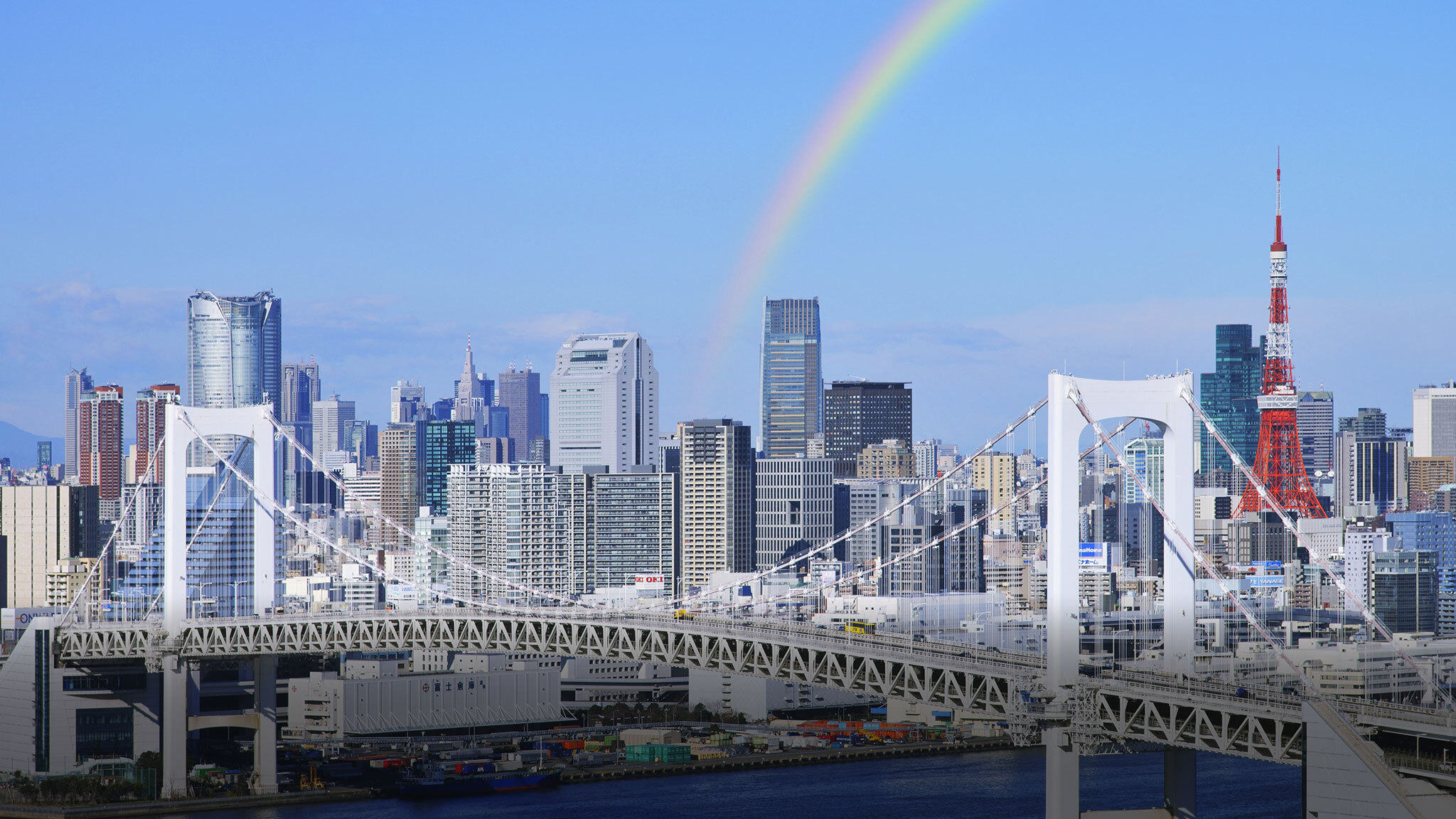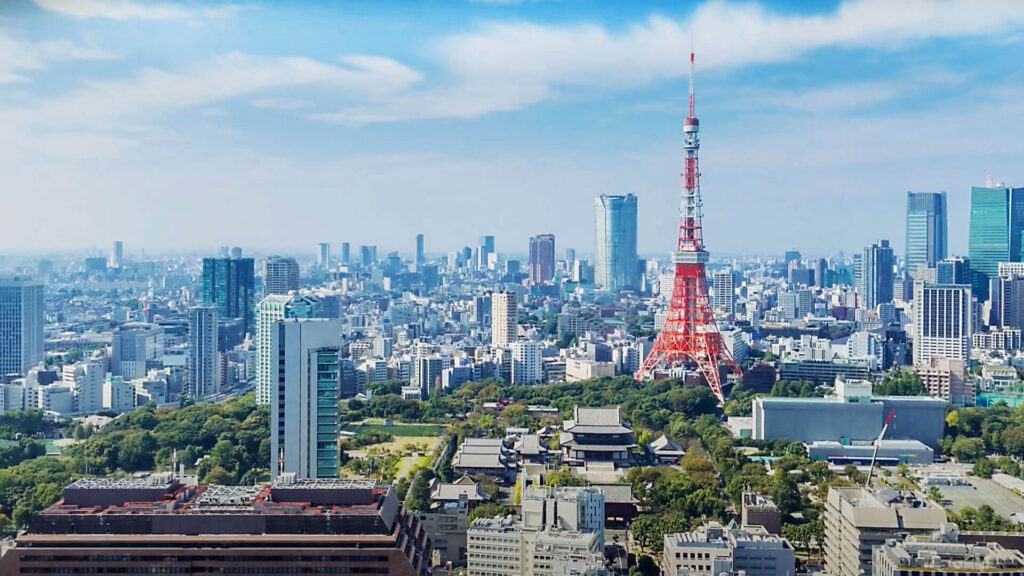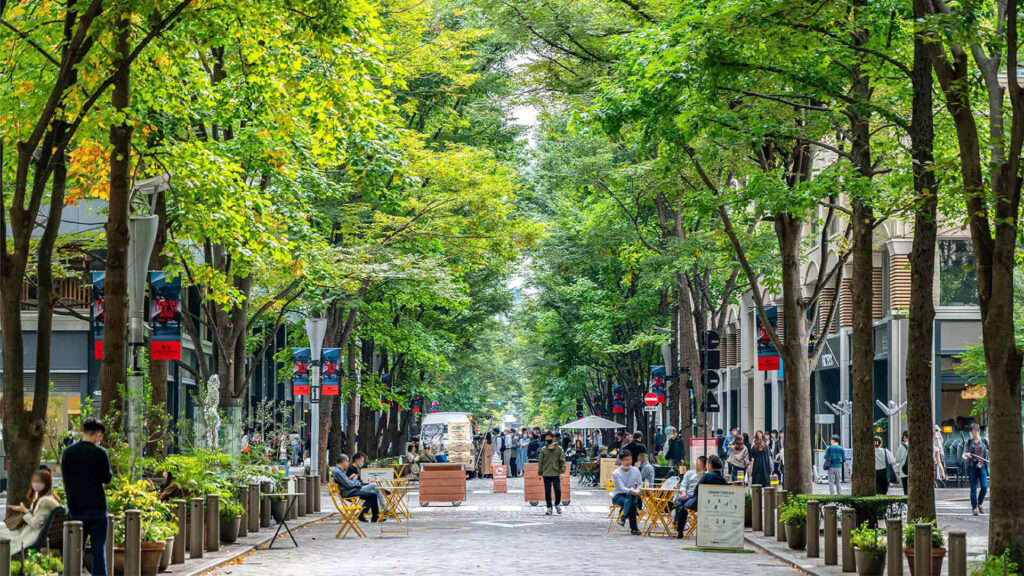
Creating a City of the Future
The Tokyo Resilience Project’s proactive approach to urban safety and readiness for sudden
Strategies for Sustainability
Cities across the world face a host of challenges related to climate change, including: rising temperatures, increasing sea levels, and typhoons and floods. Other natural disasters, such as earthquakes, also pose significant risk. To tackle these challenges, city governments, including the Tokyo Metropolitan Government (TMG), are planning and implementing a wide range of disaster risk management strategies.
The TMG, for instance, is developing a mix of best practices in hard infrastructure (or advanced urban planning) and soft infrastructure (such as cutting-edge digital technology). The city is also deploying strategies to enhance public awareness of disaster risks. Taking account of diverse voices and experiences—from national and municipal governments to businesses, residents, and other communities—is also critical to the TMG’s risk mitigation strategy as it aims to increase society’s overall resilience.

That is in part why the TMG has developed the Tokyo Resilience Project, a 17 trillion yen initiative designed to make the capital more resilient by the 2040s—and to enhance its overall safety over the next 100 years.
The Tokyo Resilience Project covers five main risks, beginning with floods and storms, earthquakes, and ash fallout following a volcanic eruption. Power and communications outages, as well as the risk of infectious diseases, are part of the mix. In the Japanese capital, significant progress has been made to mitigate these risks, including the implementation of measures to manage the damage caused by floods and storms, and strengthen earthquake-proofing and noncombustibility of entire communities.
Importantly, 2023 marked 100 years since the Great Kanto Earthquake of 1923—a disaster that spurred advancements in safety and security in Tokyo. The Tokyo Resilience Project pays homage to that legacy and aims to ensure a sustainable city for generations to come.
Rising Above the Tide
Floods and storms pose a continuous challenge to the sustainable management of cities. Partly due to rising average temperatures, such events are set to continue across the world’s metropolises.
According to the latest climate change projections of the United Nations Intergovernmental Panel on Climate Change (IPCC), there is a danger that global average temperatures could increase to 1.5C above pre-industrial levels by 2030. Recognizing the need for collaborative effort to address global warming, nearly 200 states have adopted the Paris Agreement under the United Nations Framework Convention on Climate Change to limit the global average temperature increase below 2C that of pre-industrial levels—and pursue efforts to hold it at 1.5C.
However, if global average temperatures reach 2C above pre-industrial levels, then rainfall is expected to increase by 1.1-fold and sea levels to rise by approximately 60 cm, leading to even more frequent floods and storms in major cities.
Initiatives to mitigate flood and storm risks:
Recognizing the dynamic challenges posed by large-scale disasters, the TMG is working with stakeholders across society and developing hard and soft infrastructure to enhance its crisis preparedness. After all, with 1.5 million residents living in wards consisting of areas with flood risk, Tokyo has a history of managing the risk of floods—not to mention other climate-related challenges and natural events.
To this end, Tokyo is implementing robust flood control measures for the subway system across the city. To prevent storm or flood water from entering the subway system following a major flood—and thereby disrupting services and risking lives—the Bureau has deployed physical measures from watertight doors, gates, and vents to waterproof shutters and walls.
In addition, the TMG is implementing the development of regulating reservoirs, floodgates and revetments—as well as the creation of high-elevation structures (including high-standard levees) that will serve as disaster evacuation sites.

Where applicable, hard infrastructure is being enhanced by soft infrastructure or advanced digital technology. In 2021, for example, the TMG launched a storm surge risk monitoring service capable of real-time information sharing via web applications. The platform also allows for the AI-assisted operation of floodgates and damage assessment from image data acquired in real time by drones.
As hard and soft infrastructure expands in Tokyo, risks against large-scale disasters are being mitigated, including a significant reduction in damage from typhoon-level rainfall in the city—from over 41,000 flooded buildings in 1966 to just 35 in 2017, under comparable rainfall levels.
These improvements align with the vision of the Tokyo Resilience Project, among which is a goal to establish a more resilient city by the 2040s—and create a safe and sustainable metropolis where residents live without undue concern over storm and flood damage.
A City that Does Not Collapse
In addition to floods and storms, Tokyo is at risk of earthquakes. According to projections, a magnitude 7 earthquake has a 70% probability of striking the southern Kanto region, which includes the Tokyo metropolitan area, within the next 30 years. Indeed, given the damage that was caused to the city by the Great Kanto Earthquake of 1923, Tokyo has recognized the importance of earthquake resilience and therefore deployed robust policies and taken active measures to prepare against such risk.
A large earthquake hitting Tokyo may, for example, cause major roads to become impassable, leading to significant traffic disruption, including disruption to post-disaster search and rescue and evacuation efforts. That is in part why, in its vision to alleviate such risks, the Tokyo Resilience Project aspires to create a city that “does not collapse, does not burn, and people survive” even in the event of a major earthquake.
Efforts to increase resilience against earthquakes and other natural disasters are already showing positive results. For example, simulated damage to buildings in the Tokyo metropolitan area that would be completely destroyed by an earthquake decreased from 120,000 to 80,000 over the past decade.
Initiatives to mitigate earthquake risks:
To further ensure Tokyo is increasingly quake resilient, the TMG is collaborating with stakeholders, including the private sector and academia, to develop and implement robust, city-wide physical and digital infrastructure. On the physical front, initiatives such as fireproofing communities and developing plans to expand subsidies to retrofit homes, hospitals, schools, and other buildings, are being rolled out.
At the same time, the TMG has initiated the Tokyo Digital Twin Project, building a 3D model of the metropolis that is hosted on a cloud computing platform. One application for digital twin infrastructure is to simulate, analyze, and visualize city-wide disaster risk mitigation measures. Other areas for the project, which is expected to be fully operational by 2030, include urban development, mobility, and energy optimization.

The TMG’s efforts in enhancing hard and soft infrastructure to create a city that is earthquake resilient are bearing fruit. For instance, the number of houses that have been earthquake proofed has increased from approximately 81.2% to 92% in the last 10 years. Meanwhile, areas crowded with wooden houses—which are at risk of spreading urban fires following an earthquake or other disasters—decreased from 24,000 ha to 8,600 ha within a decade.
Ultimately, these advances are in alignment with the vision of the Tokyo Resilience Project, an initiative that not only seeks to establish a city that does not collapse or burn, but also ensures the safety of Tokyo’s residents in the event of an earthquake.
Building a Safe and Secure City
As natural disasters are projected to increase, including in Tokyo, so could their impacts on the city’s residents. Addressing such challenges in collaboration with stakeholders has therefore become imperative for the TMG. That is why, drawing insights from lessons past and present, the Tokyo Resilience Project outlines a strategic roadmap to achieve disaster resilience across the city by the 2040s—and beyond.

“Let us further strengthen our efforts from the three perspectives of self-support, mutual support, and public support, and together work to achieve a resilient Tokyo. We will strongly promote [the Tokyo Resilience Project]… to ensure that Tokyo, the capital of Japan, becomes a sustainable city that offers its residents peace of mind for the next 100 years to come.”















